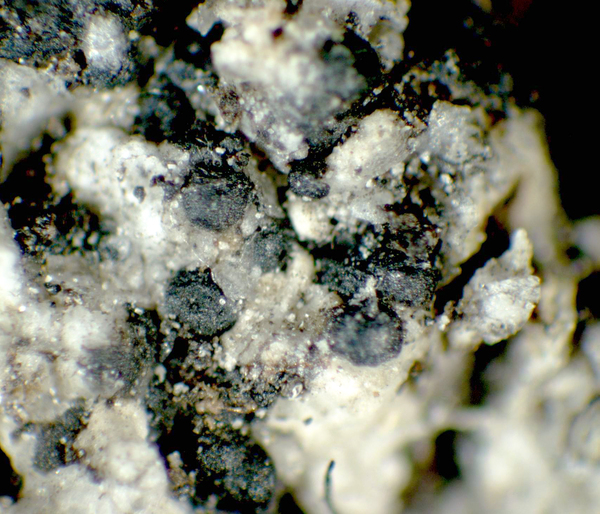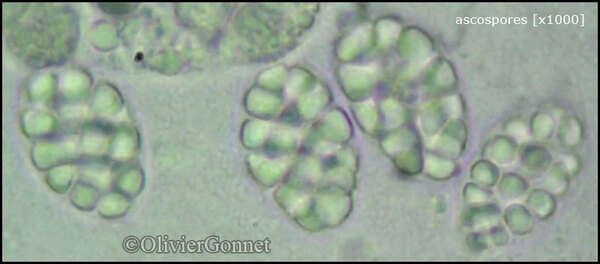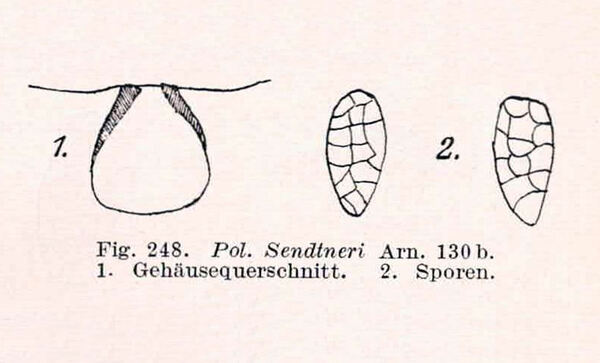Polyblastia sendtneri Kremp.
Flora, 38: 67, 1855.
Synonyms: Thelotrema sendtneri (Kremp.) Anzi
Distribution: N - Frl (TSB 35586), Ven (Nimis 1994, Thor & Nascimbene 2007), TAA (Nascimbene 2008b, Nascimbene & al. 2022), Lomb, Piem (Isocrono & al. 2004), VA (Piervittori & Isocrono 1999). C - Marc (Nimis & Tretiach 1999), Abr (Nimis & Tretiach 1999, Gheza & al. 2021).
Description: Thallus crustose, episubstratic, whitish to pale grey or pale brown, slightly glossy, with a somewhat translucent, cartilaginous appearance, uneven, formed of coalescing, convex, c. 0.15-0.5 mm wide units, forming large patches to 10 cm across, sometimes delimited by a black prothallus. Cortex 17-30 μm thick, formed of gelatinized, colourless hyphae; base of cortex sometimes with a brown pigment. Perithecia black, 1/2-3/4 immersed to subsessile, often clustered, the apex exposed as a blackish projection up to 0.3 mm in diam. Involucrellum well developed, 28-56 μm thick, merged with the exciple in the uppermost part, covering the upper half of the perithecium and slightly widened towards the base; exciple pale to dark brown, 21-31 μm thick, pseudoparenchymatous; hamathecium of periphyses and periphysoids, interascal filaments absent; periphysoids 36-44 μm long and c. 1.5 μm thick, sparingly branched; hymenial gel I+ red, K/I+ blue Asci 8-spored, clavate, K/I-, fissitunicate, the wall thickened above, with a broad ocular chamber, dehiscent by extrusion of an endotunica to form a delicate rostrum. Ascospores muriform, with 5-7 transverse septa and 1-3 longitudinal septa, hyaline, ellipsoid, (15-)20-26(-28) x (9-)11-14(-16.5) μm. Photobiont chlorococcoid. Spot tests: K-, C-, KC-, P-, UV-. Chemistry: without lichen substances.Note: a circumpolar, arctic-alpine species found on organic soil, mosses and plant debris with optimum above treeline; most common in the Alps, but also reported from the Northern and Central Apennines.
Growth form: Crustose
Substrata: soil, terricolous mosses, and plant debris
Photobiont: green algae other than Trentepohlia
Reproductive strategy: mainly sexual
Commonnes-rarity: (info)
Alpine belt: rather rare
Subalpine belt: very rare
Oromediterranean belt: absent
Montane belt: absent
Submediterranean belt: absent
Padanian area: absent
Humid submediterranean belt: absent
Humid mediterranean belt: absent
Dry mediterranean belt: absent
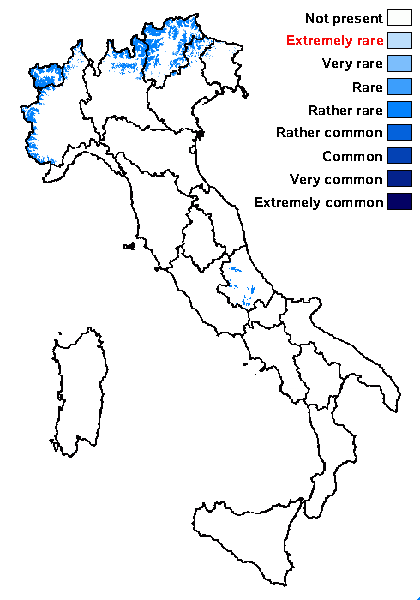
Predictive model
Herbarium samples
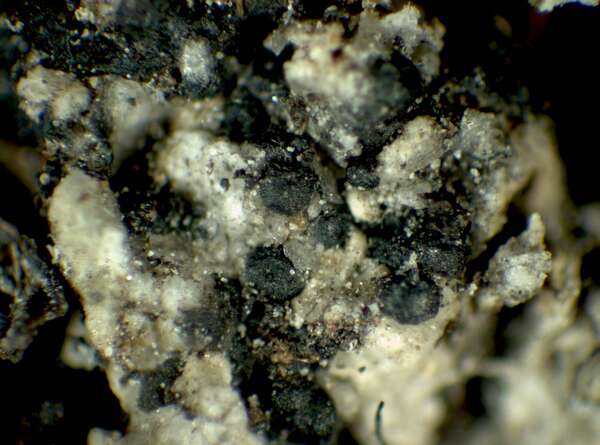

P.L. Nimis; Owner: Department of Life Sciences, University of Trieste
Herbarium: TSB (19714)
2001/11/28
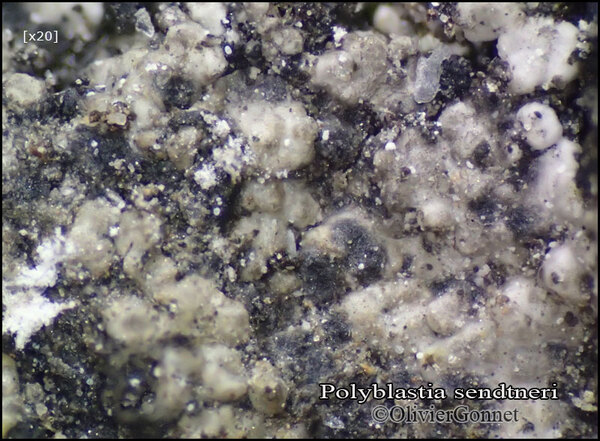
Courtesy Danièle et Olivier Gonnet - Source: https://www.afl-lichenologie.fr/Photos_AFL/Photos_AFL_P/Text_P_4/Polyblastia_sendtneri.htm
France, 25/6/2015 - Chapelle Ste Marguerite, alt. 2240 m - Savoie
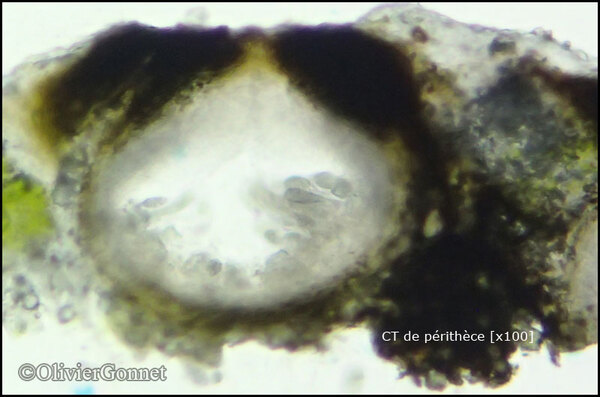
Courtesy Danièle et Olivier Gonnet - Source: https://www.afl-lichenologie.fr/Photos_AFL/Photos_AFL_P/Text_P_4/Polyblastia_sendtneri.htm
France, 25/6/2015 - Chapelle Ste Marguerite, alt. 2240 m - Savoie
Growth form: Crustose
Substrata: soil, terricolous mosses, and plant debris
Photobiont: green algae other than Trentepohlia
Reproductive strategy: mainly sexual
Commonnes-rarity: (info)
Alpine belt: rather rare
Subalpine belt: very rare
Oromediterranean belt: absent
Montane belt: absent
Submediterranean belt: absent
Padanian area: absent
Humid submediterranean belt: absent
Humid mediterranean belt: absent
Dry mediterranean belt: absent

Predictive model
| Herbarium samples |


P.L. Nimis; Owner: Department of Life Sciences, University of Trieste
Herbarium: TSB (19714)
2001/11/28

Courtesy Danièle et Olivier Gonnet - Source: https://www.afl-lichenologie.fr/Photos_AFL/Photos_AFL_P/Text_P_4/Polyblastia_sendtneri.htm
France, 25/6/2015 - Chapelle Ste Marguerite, alt. 2240 m - Savoie

 Index Fungorum
Index Fungorum
 GBIF
GBIF
